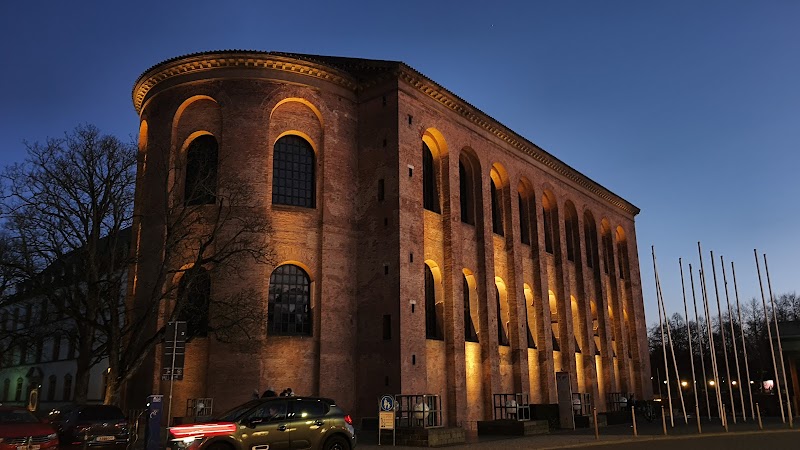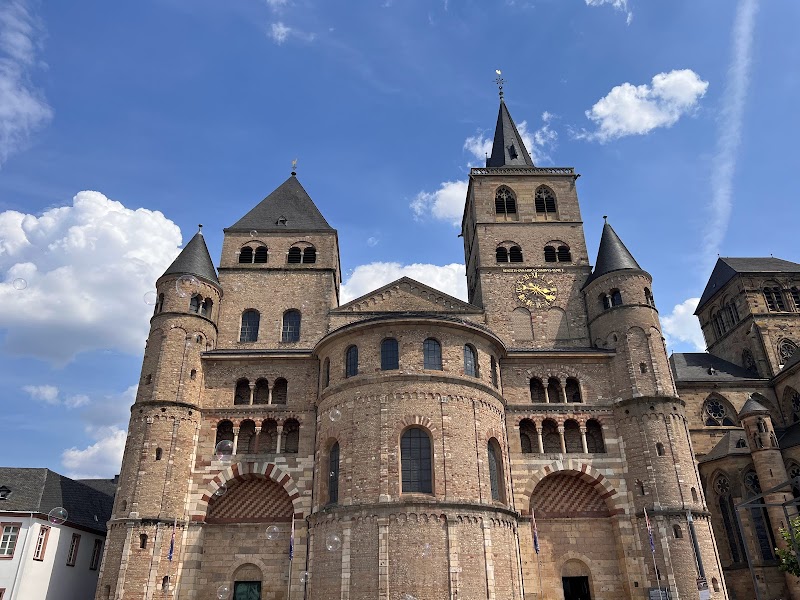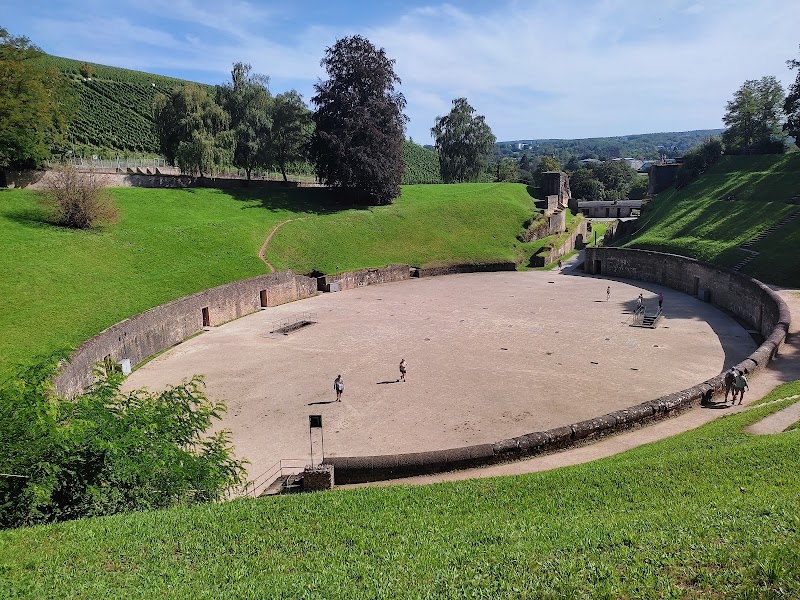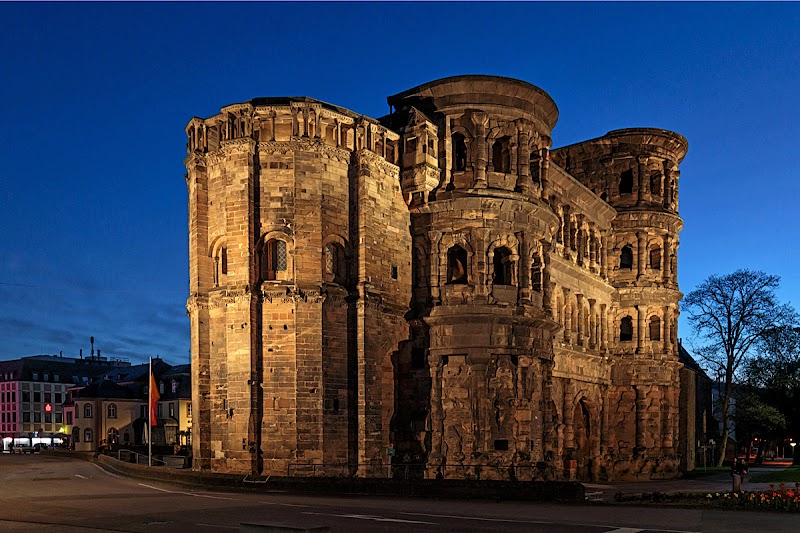Welcome to Trier
Picture a city where you can tread on roads that have been in existence for over 2000 years, marvel at ancient Roman ruins, and savour world-class wines - all in a single day. This is Trier, Germany's oldest city that boasts a rich cultural heritage spanning over two millennia. With its grandiose Porta Nigra, the spectacular Trier Cathedral, and the charming Market Square, Trier offers an unrivalled blend of history, culture, and natural allure.
As you set off on your time-travelling journey, a tourist map of Trier will prove to be your invaluable ally, helping you navigate through this city of ageless treasures. This map serves more than a mere navigational tool. It’s your gateway to uncover the hidden gems and iconic landmarks that make Trier an unparalleled destination. With it, you can chart your adventure and ensure not a single historical mark in this captivating city goes unexplored.
" Booking.comExperiencing the Magic of Trier
Step into the splendour of Trier, a city that seamlessly intertwines ancient history and modern vibrancy into a breathtaking tapestry. Unearth the hidden delights and popular attractions of this tranquil city, where you can step into history on 2000-year-old roads, indulge in world-class wines, and stand in awe of ancient Roman ruins. Here are some must-visit spots for your adventurous journey.
Unveiling Trier's Historical Wonders
The Amphitheater
The image of grand amphitheaters often comes to mind when thinking about ancient Roman architecture. Trier's amphitheater is no different. Built in the 2nd century A.D., this historical marvel could accommodate approximately 20,000 spectators who would assemble to watch gladiator fights and animal combats. Today, it's a place where history springs alive and you can almost hear the echoes of the past.
Imperial Baths
Step into the grandeur of Roman civilization at the Imperial Baths. Regarded as one of the largest bath complexes outside of Rome, it is a testament to the architectural mastery of the ancient Romans. The ruins still retain their magnificence, with soaring walls and intricate designs, offering a peek into the opulent lifestyle of the Roman elite.
Exploring Trier's Cultural Treasures
Trier's Beautiful Vineyards
Beyond the city, Trier's vineyards paint a picturesque landscape that's as tranquil as it is captivating. These vineyards produce some of the world's finest Riesling wines, providing a delightful experience for wine connoisseurs. Moreover, the vineyards' stunning setting on the banks of the Moselle River adds to the charm.
Trier Toy Museum
For something a bit different, visit the Trier Toy Museum. With a collection spanning over 100 years of toy history, it's a place where nostalgia and joy collide, offering a unique experience for both children and adults. This museum exemplifies the city's ability to cater to diverse tastes, balancing its historical heritage with modern-day recreations.
Before embarking on your journey, take a look at this exhaustive tourist map of Germany. It will facilitate your exploration of Trier and other fascinating German cities, ensuring you don't miss out on any of the country's innumerable attractions.
Encountering Trier's Natural Splendour
Roscheider Hof Open Air Museum
Experience a different side of Trier's history at the Roscheider Hof Open Air Museum, where rural life of the past is brought to life in a captivating way. From stunning old farmhouses to traditional craft demonstrations, this museum immerses you in the region's cultural heritage in a uniquely interactive way.
Petrisberg
Do not miss out on visiting Petrisberg. This hill offers unparalleled panoramic views of Trier, making it the perfect spot to take some breathtaking photographs. The view is especially mesmerizing at sunset when the city glows in the warm golden light.
Whether you're a history enthusiast, a wine lover, or an adventurer, Trier has something for everyone. It's a city where the past and present coexist harmoniously, providing visitors with a rich tapestry of experiences that are both timeless and exciting.

Practical Information for Your Trier Adventure
Transportation and Mobility
Getting around Trier is a breeze, thanks to its efficient public transportation system. Trier's local bus network, operated by SWT (Stadtwerke Trier), covers most areas of the city. Single tickets cost around €2.90, while a day pass is €6.90. For a more scenic journey, consider hopping on the Trier City Tour bus, a hop-on, hop-off service that takes you to the city's key sights.
If you prefer self-directed exploration, renting a bike is an excellent choice. There are several bike rental shops in the city, with prices starting from €10 per day. Trier is a bike-friendly city, with bike lanes and trails leading to major attractions.
Schedules and Prices
Many of Trier's attractions operate within standard business hours, from 9:00 AM to 6:00 PM. However, it's always advisable to check the official websites for the most accurate and updated information. Entry fees for major attractions range from €4 to €8. Keep in mind that some places, such as the Trier Amphitheater and the Imperial Baths, offer combined tickets for a discounted price.
Safety Tips
Trier is generally a safe city, but like any tourist destination, it's wise to stay alert and aware of your surroundings. Avoid isolated areas after dark and always keep your belongings secure. Emergency services can be reached by dialing 112, the standard number throughout Europe.
Practical Recommendations
The best times to visit Trier are from April to October when the weather is pleasant and the vineyards are in full bloom. However, the city also has a certain charm in winter, especially during the Christmas Market season in December. Don't forget to bring a good pair of walking shoes, as the city's historic core is best explored on foot.
Lastly, when dining out, tipping is customary in Trier. A tip of around 10% is generally expected in restaurants, while for taxi drivers and other service providers, rounding up to the nearest euro is the norm.

Frequently Asked Questions about Trier
Trier is a city that holds a wealth of history and culture, and naturally, you may have some queries. Here are answers to some of the most frequently asked questions about Trier.
1. What are some noteworthy annual events in Trier that I should be aware of?
The city of Trier is famous for its lively calendar of events, which truly showcases its vibrant culture. One of the most significant events is the annual Trier Christmas Market held in November and December. This event is known for its festive atmosphere, artisan stalls, and delicious food. In summer, don't miss the Trier Antiques Festival in June, where you'll find a vast array of antiques and collectibles. For wine lovers, the Trier Wine Festival in August is a must-visit.
2. I love hiking! Are there any recommended trails in or around Trier?
If you're an outdoor enthusiast, you'll be thrilled to know that Trier is surrounded by beautiful trails. The Moselsteig trail is a popular choice, stretching over 365 kilometers along the Moselle River. For a shorter hike, the Petrisberg trail offers panoramic views of the city and vineyards. Always ensure to check the weather conditions before heading out on a hike.
3. What are some unique dining experiences in Trier?
Trier's culinary scene offers a blend of traditional and contemporary experiences. For a truly unique dining experience, visit the Olewig Winery, where you can dine in ancient Roman cellars. The Zurlaubener Ufer, a riverside area, is perfect for a relaxed meal with beautiful views of the Moselle River. Make sure to try the local delicacy, "Trierer Domstein", a hearty dish inspired by the city's history.
4. Are there any specific customs or etiquettes I should be aware of while visiting Trier?
While Trier is a cosmopolitan city with a welcoming atmosphere, it's always beneficial to be aware of some local customs. Germans appreciate punctuality, so try to be on time for any appointments. When dining out, it is customary to say "Guten Appetit" before beginning your meal. Lastly, while tipping is not mandatory in Germany, it is common to round up the bill or leave a 5-10% tip for good service.
5. I am interested in Roman history. Apart from the Porta Nigra, are there other Roman sites in Trier?
Trier is often known as "The second Rome" due to its rich Roman heritage. Apart from the Porta Nigra, the Amphitheatre, the Imperial Baths, and the Basilica of Constantine are other notable Roman sites. The Rheinisches Landesmuseum Trier also houses an impressive collection of Roman artifacts.
6. Is it easy to navigate Trier with English?
Indeed, English is widely spoken in Trier, especially in tourist areas, hotels, and restaurants. Most signage and information boards at tourist attractions are also available in English. However, picking up a few basic German phrases can enhance your travel experience and help you connect with locals.
For more information about our tourist maps, check out our Tourist Map of Mainz and start planning your next adventure!


